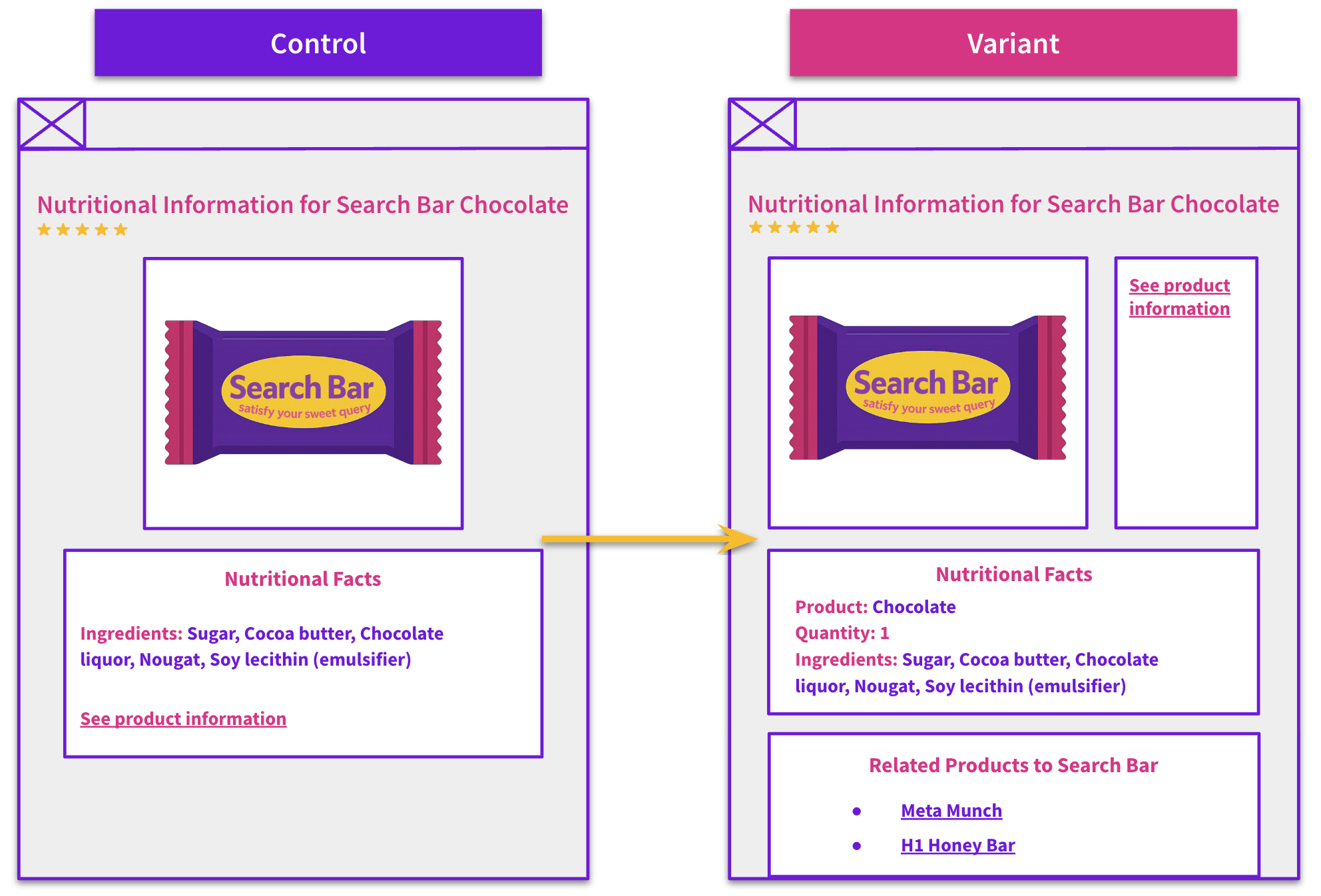Start here: how our SEO split tests work
If you aren't familiar with the fundamentals of how we run controlled SEO experiments that form the basis of all our case studies, then you might find it useful to start by reading the explanation at the end of this article before digesting the details of the case study below. If you'd like to get a new case study by email every two weeks, just enter your email address here.
In this week’s #SPQuiz, we looked at the impact on organic traffic when we removed the category name from their product title tags and only included the brand and product name.
Twitter Poll
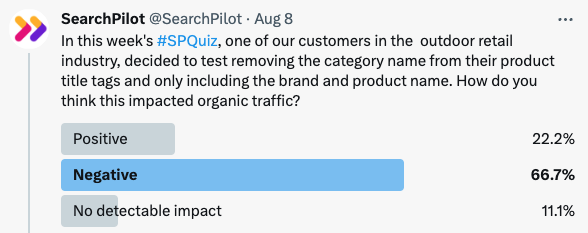
LinkedIn Poll
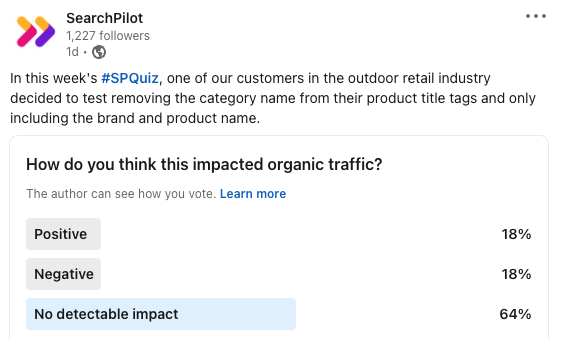
This week our voters were split! Our Twitter followers were convinced that this test would result in a negative impact, while our LinkedIn followers thought nothing would change. Read the full case study below to see how it played out:
The Case Study
Aligning your keywords with how people search is a core principle of SEO. We noticed a drastic difference between the average monthly searches of a keyword our customer targeted and the keyword people were searching for. The difference? People weren’t including the category name of the products they were searching for.
In response, we tested removing the category name from the title tag and h1 so that they only included the brand and product name. This test hypothesized that by pulling the category name, we would better align our keywords with keywords in users' search queries, simultaneously increasing our click-through rates and rankings.
What was Changed
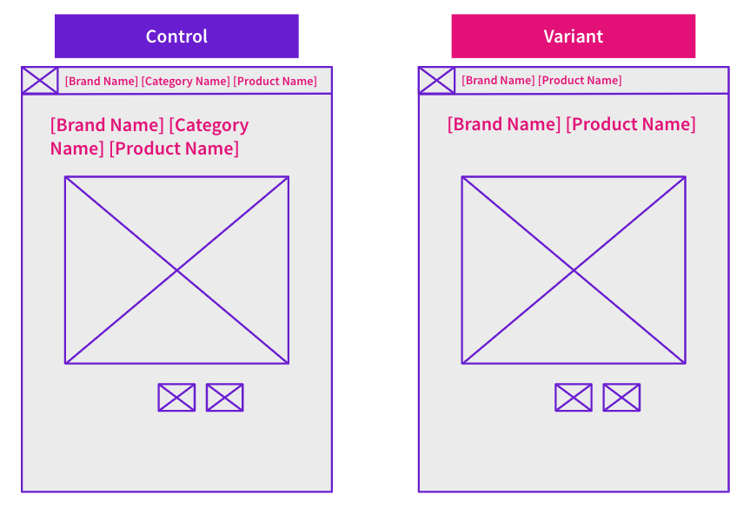
This was the resulting impact on organic traffic:
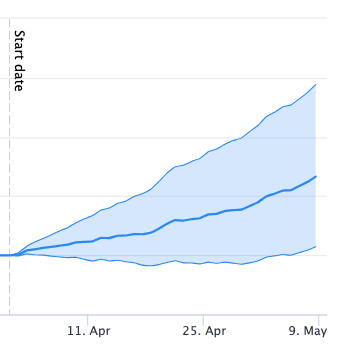
This test saw relatively significant gains, with a 28% increase in organic traffic! It should be noted that these changes were made on a subset of pages that saw particularly low traffic, so the absolute impact of sessions was smaller than some of our other tests. But it still proves that better aligning your keywords with those being searched can benefit your site’s organic traffic.
How our SEO split tests work
The most important thing to know is that our case studies are based on controlled experiments with control and variant pages:
- By detecting changes in performance of the variant pages compared to the control, we know that the measured effect was not caused by seasonality, sitewide changes, Google algorithm updates, competitor changes, or any other external impact.
- The statistical analysis compares the actual outcome to a forecast, and comes with a confidence interval so we know how certain we are the effect is real.
- We measure the impact on organic traffic in order to capture changes to rankings and/or changes to clickthrough rate (more here).
Read more about how SEO A/B testing works or get a demo of the SearchPilot platform.

